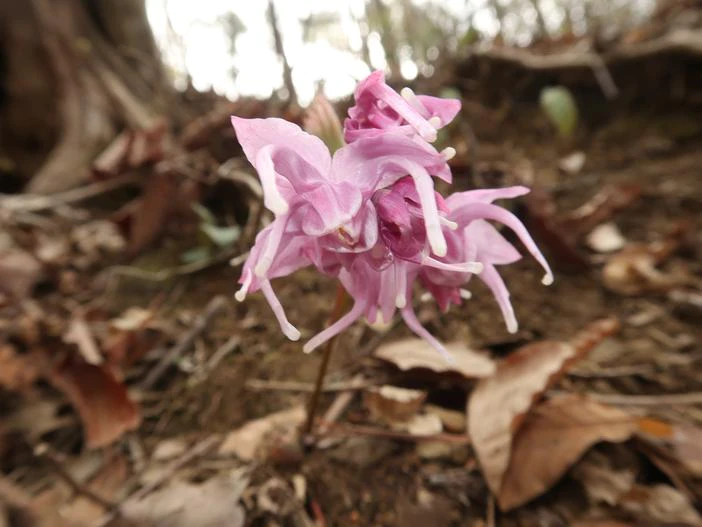Bishop’s Hat
(Epimedium sempervirens)
Bishop’s Hat (Epimedium sempervirens)
/
/

Qwert1234
CC BY-SA 4.0
Image By:
Qwert1234
Recorded By:
Copyright:
CC BY-SA 4.0
Copyright Notice:
Photo by: Qwert1234 | License Type: CC BY-SA 4.0 | License URL: https://creativecommons.org/licenses/by-sa/4.0 | Uploader: Qwert1234 | Publisher: Wikipedia Commons















Estimated Native Range
Climate Requirements for Vereeniging, South Africa
| This Plant | Your Site | Plant Suitability for Your Location | ||
|---|---|---|---|---|
| • Precipitation | 45" - 103" | 26" | Your precipitation may be insufficient for this plant. Irrigate N" / year. | Irrigate N" / year |
| • High Temp. | 65°F - 89°F | 83°F | Your summer temperatures are normal for this plant. | Excellent |
| • Low Temp. | 1°F - 35°F | 32°F | Your winter temperatures are normal for this plant | Excellent |
This plant should grow well at your location with about N inches per year (Y minutes per month) of irrigation.
Summary
Epimedium sempervirens, commonly known as Bishop’s Hat, is a semi-evergreen perennial herb native to the forest floors and shaded rocky areas of Japan. It typically grows to a height and width of 1-2 feet (0.3-0.6 meters). This plant features heart-shaped leaves and produces a profusion of delicate flowers in shades of yellow, pink, red, and white during the spring, which are held above the foliage on wiry stems and are quite showy. The foliage often takes on a bronze tint in the fall, adding seasonal interest.
Bishop’s Hat is valued for its ornamental flowers and ground-covering ability, making it an excellent choice for woodland gardens, shaded borders, and underplanting beneath larger shrubs or trees. It is also appreciated for its drought tolerance once established, and its resistance to deer and rabbit browsing. In cultivation, it prefers part shade to full shade, consistent moisture with well-drained soil, and is relatively low maintenance. While it is not typically prone to serious pests or diseases, it can suffer from leaf scorch if exposed to too much sun or overly dry conditions.CC BY-SA 4.0
Bishop’s Hat is valued for its ornamental flowers and ground-covering ability, making it an excellent choice for woodland gardens, shaded borders, and underplanting beneath larger shrubs or trees. It is also appreciated for its drought tolerance once established, and its resistance to deer and rabbit browsing. In cultivation, it prefers part shade to full shade, consistent moisture with well-drained soil, and is relatively low maintenance. While it is not typically prone to serious pests or diseases, it can suffer from leaf scorch if exposed to too much sun or overly dry conditions.CC BY-SA 4.0
Plant Description
- Plant Type: Herb
- Height: 1-2 feet
- Width: 1-2 feet
- Growth Rate: Moderate
- Flower Color: White
- Flowering Season: Spring
- Leaf Retention: Deciduous, Semi-Deciduous
Growth Requirements
- Sun: Part Shade, Full Shade
- Water: Low, Medium
- Drainage: Fast
Common Uses
Bee Garden, Border Plant, Deer Resistant, Drought Tolerant, Erosion Control, Groundcover, Low Maintenance, Rabbit Resistant, Rock Garden, Showy Flowers
Natural Habitat
Forest floors and shaded rocky areas in Japan
Other Names
Common Names:
Scientific Names: Epimedium sempervirens, Epimedium grandiflorum subsp. sempervirens, Epimedium hypoleucum, Epimedium macranthum subsp. hypoleucum, Epimedium macranthum var. hypoglaucum, Epimedium macranthum var. hypoleucum, Epimedium sempervirens subsp. hypoleucum, Epimedium sempervirens var. hypoleucum
GBIF Accepted Name: Epimedium sempervirens Nakai ex Maek.